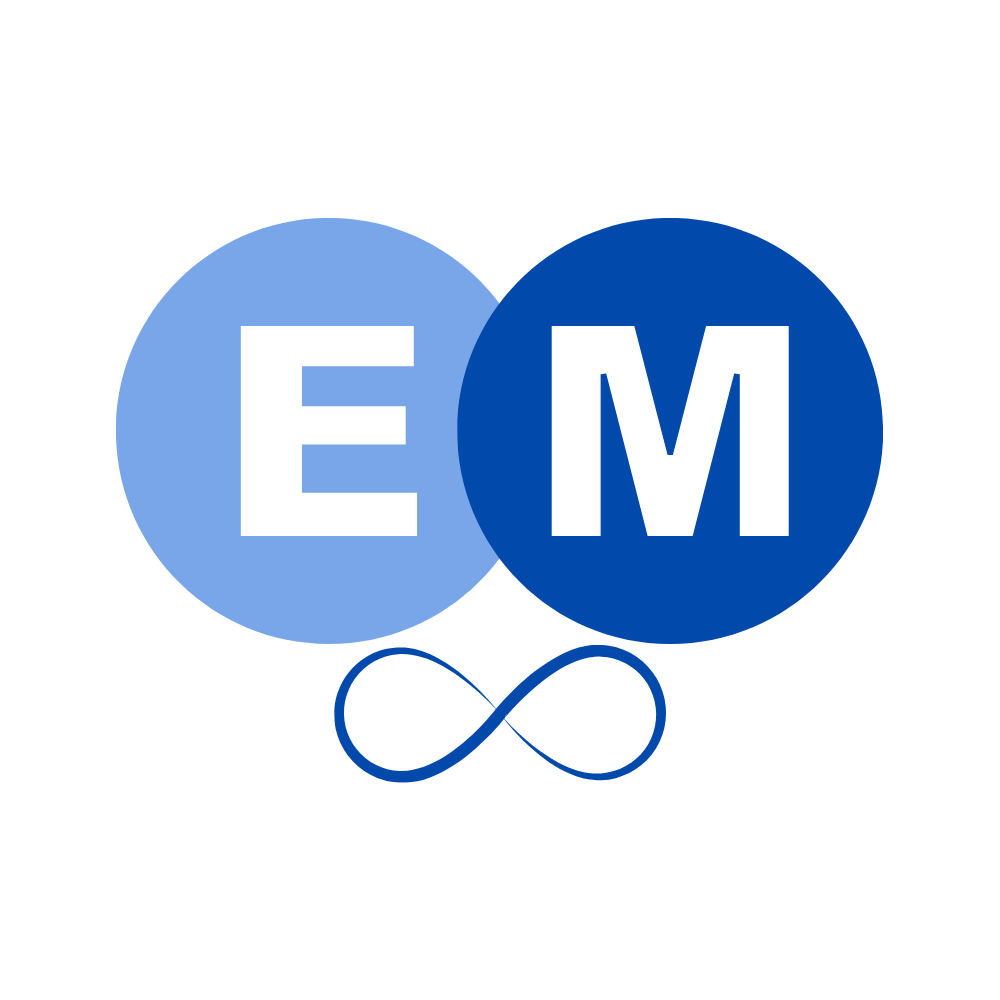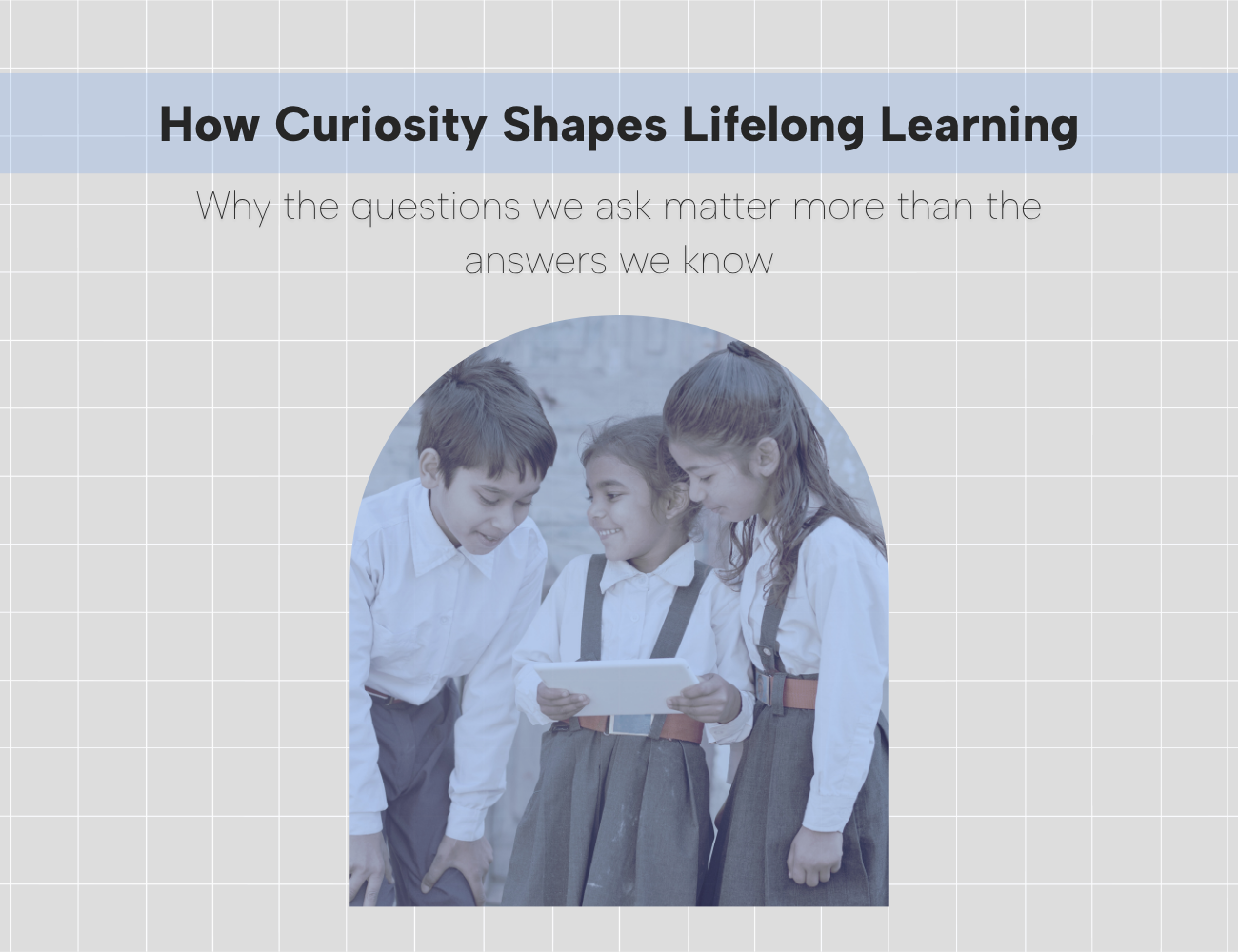Why the questions we ask matter more than the answers we know
The Spark That Starts It All
Every discovery begins with a question. From the earliest moments of childhood, curiosity drives us to explore, to touch, to test, to ask why. It is one of the most natural human instincts, yet one of the easiest to lose as we grow older.
Curiosity is more than interest; it is the mind’s way of reaching beyond what it already knows. It’s what turns observation into understanding and repetition into insight. The great thinkers of every age—from scientists to poets—have been guided by a restless desire to know more, not because they had to, but because they couldn’t help it.
In education and in life, curiosity is the quiet force that sustains learning long after formal schooling ends. It fuels the lifelong process of discovery, reminding us that learning is not defined by lessons completed, but by questions yet to be asked.
The Science of Curiosity
Curiosity doesn’t just make learning enjoyable, it physically changes how our brains work. A 2014 study by researchers at the University of California, Davis, found that curiosity activates the brain’s reward and memory centers, particularly the hippocampus and the dopamine system. This means we remember information better when we’re genuinely interested in it. Learning becomes not just mental, but emotional.
How Curiosity Shapes the Brain:
- It turns learning into pleasure. When curiosity is sparked, dopamine—the “feel-good” neurotransmitter—is released, making learning feel rewarding rather than forced.
- It improves memory retention. The brain links curiosity-driven information to long-term memory storage. In simple terms, the more curious we are, the longer we remember.
Why This Matters for Learning:
- Curiosity bridges knowledge gaps. When the mind senses an unanswered question, it seeks resolution. That discomfort drives deeper focus and engagement.
- It builds lifelong motivation. Unlike external rewards (grades, praise), curiosity creates internal motivation, the desire to learn for learning’s sake.
This scientific link between curiosity and cognition explains why the most memorable lessons often come from moments of genuine wonder, not obligation. When learning feels meaningful, the brain remembers, adapts, and grows.
From Childhood Wonder to Adult Learning
Children have an effortless relationship with curiosity. They question everything, not to challenge but to understand. Every “why” they ask opens a door to discovery. Their curiosity is pure, unafraid of mistakes, unbothered by judgment. They learn through wonder, not pressure, and that wonder is what fuels genuine learning.
As we grow older, something changes. The demands of exams, expectations, and structured learning slowly replace exploration with routine. In many education systems, especially in India, curiosity is often seen as distraction rather than potential. Students are taught to answer correctly rather than think deeply. Over time, we start to trade questions for certainty.
Yet, childlike curiosity remains one of the greatest gifts a learner can preserve. It keeps the mind alive, flexible, and open to possibility. When adults rediscover that sense of wonder, learning transforms from a task into a choice. It reminds us that understanding is not a finish line, it’s a lifelong process of asking, observing, and reimagining.
Rekindling that early curiosity doesn’t mean going back to childhood; it means carrying that same spark into adult life. It means asking questions without fear of not knowing, exploring without a set goal, and finding joy in the process of learning itself.
Curiosity in Practice – Learning Beyond Classrooms
True learning rarely happens in straight lines. It unfolds in unexpected places—inside questions, mistakes, and experiments. Classrooms can introduce knowledge, but curiosity turns it into understanding. It drives people to read beyond the syllabus, to explore ideas not because they must, but because they want to know.
Albert Einstein once said, “I have no special talent. I am only passionately curious.” His curiosity led him to rethink time and space itself, not because it was assigned, but because he couldn’t stop wondering. The same force can be seen in countless others who followed their questions instead of a prescribed path.
Marie Curie’s curiosity about invisible rays led her to discover radium and polonium, transforming science and medicine. Leonardo da Vinci’s notebooks were filled with sketches of anatomy, flight, and mechanics—centuries ahead of their time—because he never stopped asking how the world worked. In more recent times, innovators like Steve Jobs and A.P.J. Abdul Kalam credited curiosity as the seed of creativity, the habit that made them lifelong learners long after formal education ended.
Curiosity doesn’t need fame or brilliance to matter. It can appear in everyday acts—when a student explores an idea that wasn’t in the textbook, when a teacher experiments with new ways to explain a lesson, or when a parent learns alongside their child. These moments show that learning continues wherever curiosity is allowed to lead.
The Role of Curiosity in Lifelong Growth
Curiosity is not limited to classrooms or textbooks. It shapes how we think, connect, and adapt throughout life. A curious person approaches challenges with openness rather than fear. Instead of asking, “Can I do this?” they ask, “How can I learn to do this?” That single shift in perspective turns obstacles into opportunities.
Curiosity also builds emotional intelligence. When we wonder why people think or behave differently, we begin to understand their perspectives more deeply. It encourages empathy, the kind that helps us listen with patience instead of judgment. In this way, curiosity strengthens relationships and communication as much as it strengthens intellect.
Professionally, curiosity drives growth in every field. A study by Harvard Business Review found that employees who are encouraged to ask questions are more creative and perform better in problem-solving tasks. The same applies to students and lifelong learners: curiosity fuels adaptability in a world that keeps changing faster than we can predict.
Most importantly, curiosity nurtures a sense of purpose. It reminds us that learning is not about perfection, but about discovery. Each new question becomes a small act of courage, a step toward understanding ourselves and the world around us a little better every day.
Cultivating Curiosity – Practical Ways to Keep Learning Alive
Curiosity doesn’t disappear with age, it simply needs to be invited back. Like any skill, it grows stronger with use. The first step is to create space for wonder in your everyday life. Ask questions, even about things you think you already understand. Instead of accepting information at face value, pause and explore the “why” behind it.
Read beyond your usual subjects. If you enjoy literature, try learning a little about physics or art history. If you love science, explore philosophy or world cultures. Curiosity thrives at the intersections of ideas. Diverse learning keeps your mind flexible and prevents knowledge from becoming rigid.
Another way to nurture curiosity is through reflective learning. Keep a small notebook or digital journal for questions that catch your attention, anything from “Why do we dream?” to “How did ancient languages evolve?” Revisit them when you have time. The act of recording curiosity helps turn fleeting interest into lasting inquiry.
Engaging with others also matters. Conversations with people who see the world differently can spark ideas that solo reading never could. Join study groups, discussions, or community projects where curiosity is shared, not judged.
Lastly, give yourself permission to not know everything. Curiosity lives in uncertainty. Accepting that you might never find every answer is what keeps you searching and that search is what keeps you learning.
Closing Thought – The Question That Never Ends
Curiosity is the quiet force that keeps learning alive. It invites us to look closer, to listen longer, and to wonder more deeply about what we see. Every question we ask connects us to something larger—an idea, a person, a possibility. When curiosity guides us, learning stops being an obligation and becomes a way of living.
The truth is, there will always be more to know than any one person can ever learn. But that is what makes the journey meaningful. The curious mind accepts uncertainty not as confusion, but as an open door. It understands that learning has no final destination, only moments of discovery along the way.
In the end, lifelong learners are not defined by how much they know, but by how willingly they continue to ask. The next question is always waiting and it might just change the way we see the world.
“Millions saw the apple fall, but Newton was the one who asked why.” – Bernard Baruch
“I have no special talent. I am only passionately curious.” – Albert Einstein
“Curiosity is the wick in the candle of learning.” – William Arthur Ward


Leave a Reply